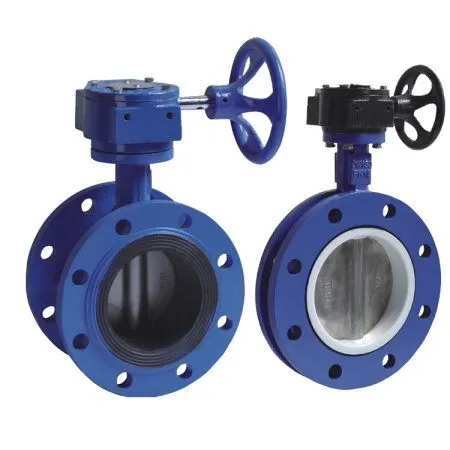In fluid control systems across industries—whether water treatment plants, chemical processing facilities, or HVAC systems—butterfly valves serve as essential components for regulating flow. Known for their compact design and quick quarter-turn operation, these valves are valued for their simplicity, reliability, and cost-effectiveness.
Two of the most commonly used styles of butterfly valves are the wafer and lug-style configurations. Though they may look similar at a glance, they have important distinctions in design, installation, pressure rating, and functionality. Understanding these differences is critical when selecting the right valve for your pipeline system.
This article provides a comprehensive comparison between wafer and lug-style butterfly valves, examining how each works, where they are best used, and what to consider before choosing one.
Before diving into the differences, it's helpful to understand how a butterfly valve works.
A butterfly valve is a type of quarter-turn valve that uses a circular disc—called the butterfly—as the flow control element. This disc is mounted on a shaft. When the handle or actuator turns the shaft 90 degrees, the disc moves from a closed position (perpendicular to the flow) to an open position (parallel to the flow).
Because the disc always remains within the flow path, butterfly valves introduce a slight pressure drop even when fully open. However, their streamlined construction offers a significant advantage over bulkier valve types such as gate or globe valves.

The wafer-style butterfly valve is the more traditional and economical variant. It’s designed to fit between two flanges and is secured using bolts that pass through the flanges and around the valve body, essentially sandwiching it in place.
Unlike lug-style valves, wafer valves do not have threaded bolt holes. Instead, flange bolts run through the entire assembly and are tightened to hold the valve body between two pipe ends. This setup requires disconnection of both upstream and downstream piping if the valve needs maintenance or replacement.
Wafer-style butterfly valves are widely used in applications where:
System isolation is not required
Low- to medium-pressure service is sufficient
Space is limited, and weight needs to be minimized
Cost-efficiency is a key factor
You’ll commonly find wafer-style valves in:
HVAC systems
Water supply and treatment
Food and beverage industries
Fire protection systems

Compact and Lightweight: Ideal for tight spaces and less structural support.
Lower Cost: More affordable than lug-style valves.
Quick Installation: Easy to install in existing flanged systems.
Low Pressure Drop: When fully open, the disc lies parallel to the flow, offering minimal resistance.
Cannot be used for dead-end service: Must be installed between flanges.
No flow isolation on one side: For maintenance, both sides of the line must be depressurized and disconnected.
Lower pressure ratings compared to lug-style valves.
The lug-style butterfly valve features threaded bolt holes (lugs) on the valve body, allowing it to be bolted directly to the pipeline flanges on either side. This enables it to act as a terminal valve—meaning one side of the piping system can be removed without affecting the other side.
Lug-style valves offer a more secure and permanent connection. Each side of the valve is fastened independently using bolts threaded into the lugs. This allows for isolation of either the upstream or downstream side for maintenance—an important benefit in many industrial applications.
Lug-style butterfly valves are preferred for:
High-pressure systems
Critical applications requiring pipeline isolation
Dead-end service
Corrosive or abrasive media
They are commonly found in:
Oil and gas operations
Power generation plants
Mining and slurry systems
Chemical and petrochemical processing

Isolation Capable: Can isolate either side of the line for service without system shutdown.
Stronger and More Durable: Built to withstand higher pressure and temperature conditions.
Versatile Mounting: Can serve as a block valve or terminal valve.
Dead-End Service: Some models are rated for pressure retention on one side with the other side removed.
Higher Cost: More material and machining involved.
Heavier and Bulkier: Requires more support and space during installation.
Longer Installation Time: Due to individually bolted sides.
|
Feature |
Wafer-Style Valve |
Lug-Style Valve |
|
Installation |
Sandwiched between flanges |
Bolted directly to flanges via threaded lugs |
|
Isolation Capability |
Cannot isolate one side |
Can isolate one side for maintenance |
|
Weight |
Lighter |
Heavier |
|
Cost |
Generally lower |
Generally higher |
|
Pressure Handling |
Suitable for low to medium pressure |
Suitable for high-pressure applications |
|
Maintenance |
Requires system shutdown |
Allows maintenance on one side |
Choosing the correct valve depends on your specific application, pressure requirements, installation needs, and budget. Here are the key factors to evaluate:
Use lug-style valves for high-pressure systems.
Wafer valves are suitable for systems operating under moderate or low pressure.
If you need to isolate one side of the system for inspection or repair, choose a lug-style valve.
For systems that can be fully shut down during maintenance, wafer-style is adequate.
Only lug-style valves rated for dead-end service should be used when one side of the pipeline will be removed.
If cost is a concern, wafer-style valves are more economical.
While lug-style valves may cost more upfront, they can offer savings in maintenance and system downtime.
For compact systems with limited space, wafer-style valves are preferable due to their slim profile and lighter weight.
Both wafer and lug-style butterfly valves offer unique advantages that make them suitable for different industrial applications. The wafer valve shines in compact, cost-sensitive systems with lower pressure requirements, while the lug-style valve is the go-to choice for high-pressure pipelines and systems requiring side-specific isolation and easy maintenance access.
Understanding the specific needs of your pipeline—such as flow isolation, pressure class, service conditions, and maintenance access—will help you select the most suitable valve for optimal performance and long-term reliability.
Whether you are designing a new system or upgrading an existing one, consulting with valve specialists and engineers can help you ensure you choose the best option for your operational goals.